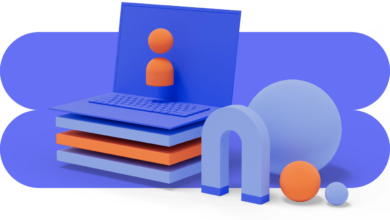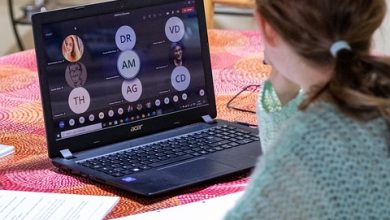Teacher work from home, What is important to succeed?

Work from home as a teacher
Working from home as a teacher can have its benefits, such as increased flexibility and the ability to create a more personalized and comfortable learning environment. However, it can also come with its challenges, such as the need to adapt to new technologies and manage distractions at home. Here are a few things to consider if you are considering a teacher working from home:
- Make sure you have the necessary equipment and technology: In order to work from home effectively, you will need a reliable computer, a stable internet connection, and any other necessary tools and software. Make sure you have everything you need before you start working from home.
- Create a dedicated workspace: It’s important to have a dedicated space where you can work without distractions. This could be a separate room or a quiet corner of your home.
- Set boundaries: It can be challenging to separate work from home life when you are working from home. Make sure to set clear boundaries with your family and loved ones about your work hours and when you are available to be disturbed.
- Stay organized: Keep your work materials and documents organized and easily accessible. This will help you stay focused and productive.
- Take breaks: Working from home can be isolating, so it’s important to take breaks and step away from your work regularly. Take walks, stretch, or find other ways to relax and recharge.
- Stay connected: Make an effort to stay connected with your colleagues, students, and their families. This can help you feel supported and connected to your work community.
Here are a few more tips and considerations for working from home as a teacher:
- Set a routine: Establishing a regular routine can help you stay focused and organized. Consider setting a schedule for your work hours and breaks, as well as a routine for your daily tasks and responsibilities.
- Communicate with your students and their families: Make sure to communicate with your students and their families regularly to keep them informed about assignments, progress, and any other updates. This can be done through email, phone calls, or video conferencing.
- Use technology to your advantage: There are many tools and resources available that can help you teach and connect with your students remotely. Consider using video conferencing software, online collaboration tools, and educational apps to engage your students and make your lessons more interactive.
- Seek support: If you are finding it difficult to adapt to working from home, don’t be afraid to seek support from your colleagues, supervisor, or a professional. Working from home can be isolating, so it’s important to reach out for help if you need it.
- Take care of yourself: It’s important to take care of your physical and mental well-being while working from home. Make sure to eat healthy meals, get enough sleep, and take breaks to stretch and relax. It’s also a good idea to set boundaries around work and make time for activities that you enjoy outside of work.
Tools and resources available help you teach and connect with your students remotely


Teachers working from home must have many tools and resources available that can help teachers teach and connect with their students remotely and work from home to get good profit. Here are a few examples:
Video conferencing software: Video conferencing software, such as Zoom, Google Meet, or Microsoft Teams, allows teachers to hold virtual classroom sessions and hold one-on-one meetings with students. These tools also allow teachers to share their screens, present slides, and collaborate in real time.
Online collaboration tools: Online collaboration tools, such as Google Docs, allow teachers to assign and grade assignments, provide feedback, and collaborate with students in real time.
Learning management systems: Learning management systems, such as Blackboard or Canvas, allow teachers to create and deliver online course materials, assign and grade assignments, and track student progress.
Educational apps: There are many educational apps available that can be used to supplement in-class instruction or as standalone resources for remote learning. Examples include Khan Academy, Duolingo, and Quizlet.
Physical materials: Depending on the subject matter and the needs of your students, you may also need to send physical materials to your students, such as textbooks, workbooks, or other supplies. Make sure to communicate with your students and their families about how to obtain and return these materials.
I’m glad I could help! Working from home as a teacher can be a rewarding and fulfilling experience, but it can also come with its own set of challenges. By being organized, staying connected, and taking care of yourself, you can set yourself up for success in your role as a teacher working from home. If you have any further questions or need additional support, don’t hesitate to ask. I’m here to help.
Best sites to work from home as a teacher
There are many websites and online platforms that allow teachers to work from home and teach remotely. Some popular options include:
- VIPKid: This platform allows teachers to teach English to students in China through one-on-one video lessons.
- Teachable: This platform allows teachers to create and sell their own online courses in a variety of subjects.
- Outschool: This platform connects teachers with students who are interested in taking small group or one-on-one online classes in a variety of subjects.
- Khan Academy: This nonprofit organization offers free online classes and resources for students and teachers in a variety of subjects, including math, science, and the humanities.
- iTutorGroup: This platform allows teachers to teach English, math, science, and other subjects to students in a variety of countries through one-on-one video lessons.
- Cambly: This platform connects English language learners with native English-speaking tutors for conversation practice and language instruction.
- Udemy: This platform offers a wide range of online courses on a variety of subjects, including many taught by teachers.
Here are some additional details about the platforms I mentioned:
- VIPKid: This platform connects native English-speaking teachers with students in China for one-on-one, online language instruction. Teachers can set their own schedule and work from anywhere with a stable internet connection. VIPKid requires applicants to have a bachelor’s degree and prior teaching experience, as well as to pass a background check.
- Outschool: This platform allows teachers to create and teach their own live, interactive online classes on a variety of subjects for students in grades K-12. Teachers set their own class schedules and prices, and Outschool handles enrollment and payment processing. Outschool does not require prior teaching experience but does require teachers to complete an application process and pass a background check.
- Cambly: This platform connects English language learners with native English-speaking tutors for conversation practice and language instruction. Tutors can work from anywhere with a stable internet connection and set their own availability. Cambly requires applicants to be fluent in English and to pass a short audition.
- Teachable: This platform allows teachers to create and sell their own online courses on a variety of subjects. Teachable handles course hosting, payment processing, and student enrollment, and offers a range of tools and resources to help teachers create and promote their courses. There are no specific requirements to become a teacher on Teachable, but creating high-quality courses that meet the needs of students is important for success.
- Udemy: This platform offers a wide range of online courses on a variety of subjects, including many taught by teachers. Udemy handles course hosting, payment processing, and student enrollment, and offers a range of tools and resources to help teachers create and promote their courses. There are no specific requirements to become a teacher on Udemy, but creating high-quality courses that meet the needs of students is important for success.
- Khan Academy: This non-profit organization offers free, online resources for students and teachers, including video lessons, practice exercises, and more. Khan Academy does not currently offer paid teaching opportunities, but it is a great resource for teachers looking to supplement their classroom instruction or for students looking to learn new subjects on their own.
I hope this information is helpful! If you have any specific questions about any of these platforms, feel free to ask.
It’s important to do your research and carefully evaluate any platform or website before committing to teaching with them. Make sure to read reviews from other teachers and consider the pay, workload, and other factors before deciding on a platform.





